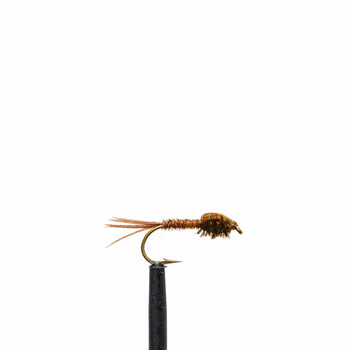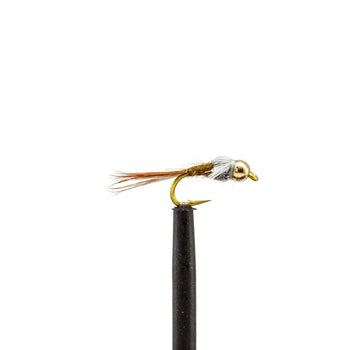Baetis Brilliance: Unraveling the Allure of Henderson's Master Baetis

In the intricate and captivating realm of fly fishing, knowing about underwater life is essential. This month, our focus is on a crucial part of a trout's diet: the Baetis. This genus of mayflies, commonly referred to as Blue-Winged Olives (BWOs), is extremely important for anglers, particularly for those targeting trout. These small insects, typically olive or grayish in color, are a significant part of the trout diet as they hatch in abundant numbers, particularly during spring and fall. Before we delve into the superb qualities of Henderson's Master Baetis (Mayhem Midge), let's first explore what exactly a Baetis is. Join us in this exploration as we reveal the unique attributes of the Master Baetis and its role in the enthralling world of Baetis fly fishing.
Understanding Baetis: The Backbone of Trout Diets
Baetis are small aquatic insects that are a genus of the mayfly, a staple in the diet of trout. These insects go through various life stages, from nymph to dun to spinner, and their presence in the water triggers feeding frenzies among trout.

-
Nymph Stage: This is when the Baetis lives underwater. Fly fishers use nymph patterns to imitate this stage.
-
Emerger Stage: This is when the nymph transitions to an adult. Emerger patterns are used to imitate Baetis as they ascend to the water's surface.
-
Dun Stage: After emerging on the water's surface, the Baetis molts into a dun. Dun patterns imitate this adult stage of the mayfly when it sits on the water surface.
-
Spinner Stage: This is the final stage of the mayfly, where it mates and then dies. Spinner patterns are designed to mimic this stage.
Baetis are prevalent in all seasons, but are especially significant because they hatch in cooler temperatures, making them one of the few reliable food sources for trout in early spring and late fall. Their small size, typically in the #16-#24 range, and their olive or grayish hue make them a challenge yet an exciting target for the fly angler.
The Genius Behind the Design: The Henderson Legacy
Henderson's Master Baetis was conceived by the ingenious Matt Henderson, a renowned fly tyer whose understanding of aquatic insects and their lifecycles has significantly influenced modern fly tying. Henderson's designs are not just flies; they are the culmination of meticulous observation and a profound appreciation of nature's subtleties.
Craftsmanship and Materials: A Symphony of Simplicity and Effectiveness
The Henderson's Master Baetis (Mayhem Midge) is a masterclass in the blend of simplicity and effectiveness. The body of the fly is expertly crafted using durable, high-quality synthetic materials that mimic the slender profile of natural Baetis nymphs. The tail is constructed of micro-fiber and adds to its lifelike movement in the water. What sets the Mayhem Midge apart is its ability to present a realistic and tempting silhouette to discerning trout, making it a go-to pattern in various conditions.
When and How to Use: Maximizing Your Chances on the Water
Timing is Everything
The Baetis, or Blue-Winged Olive, hatch is a significant event in the trout fishing calendar. These hatches can occur throughout the year but are most prolific in the spring and fall. During these seasons, especially on overcast or drizzly days, the Baetis nymphs become active, and trout feed heavily on them. This is when the Mayhem Midge truly shines.
Technique and Presentation
The key to successfully fishing the Mayhem Midge lies in its presentation. As a nymph, it is best fished below the surface. Depending on the water conditions and depth, you might opt for a traditional nymphing approach or use it in a tandem rig with another nymph or emerger pattern.
-
In Faster Waters: In streams with faster currents, use the Mayhem Midge as part of a two-fly nymph rig. This helps get the fly down quickly into the feeding zone.
-
In Slower, Deeper Pools: Here, a more delicate approach is required. A lighter tippet and a careful cast will allow the fly to drift naturally with the current, mimicking a free-floating nymph.
-
Match the Hatch: Pay attention to the prevalent Baetis nymphs in the water. Match the size and color of the Mayhem Midge to these natural insects for a more effective presentation.
Top Baetis Fly Patterns: Expanding Your Arsenal
While Henderson's Master Baetis is a stellar choice, diversifying your fly box with various Baetis patterns can significantly enhance your fishing experience. Here are 5 more top Baetis flies that are revered among anglers:













